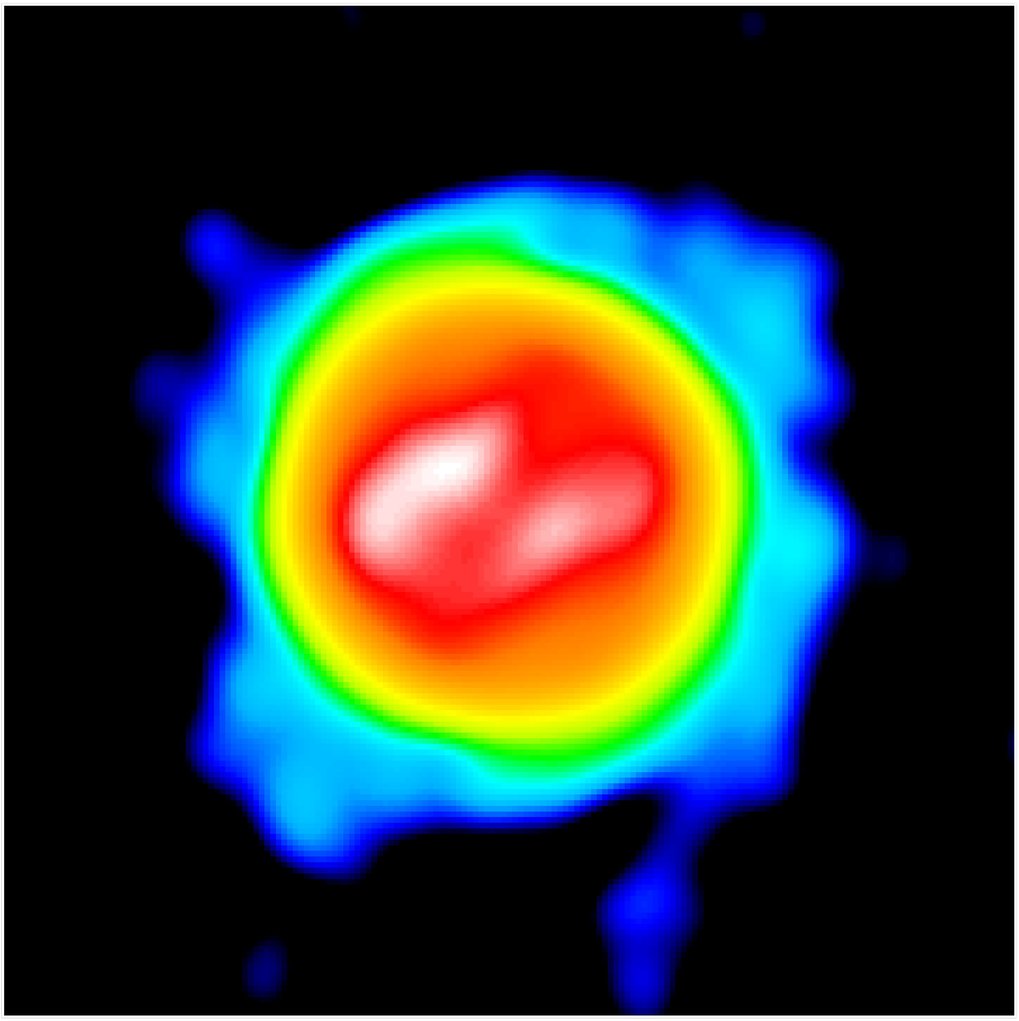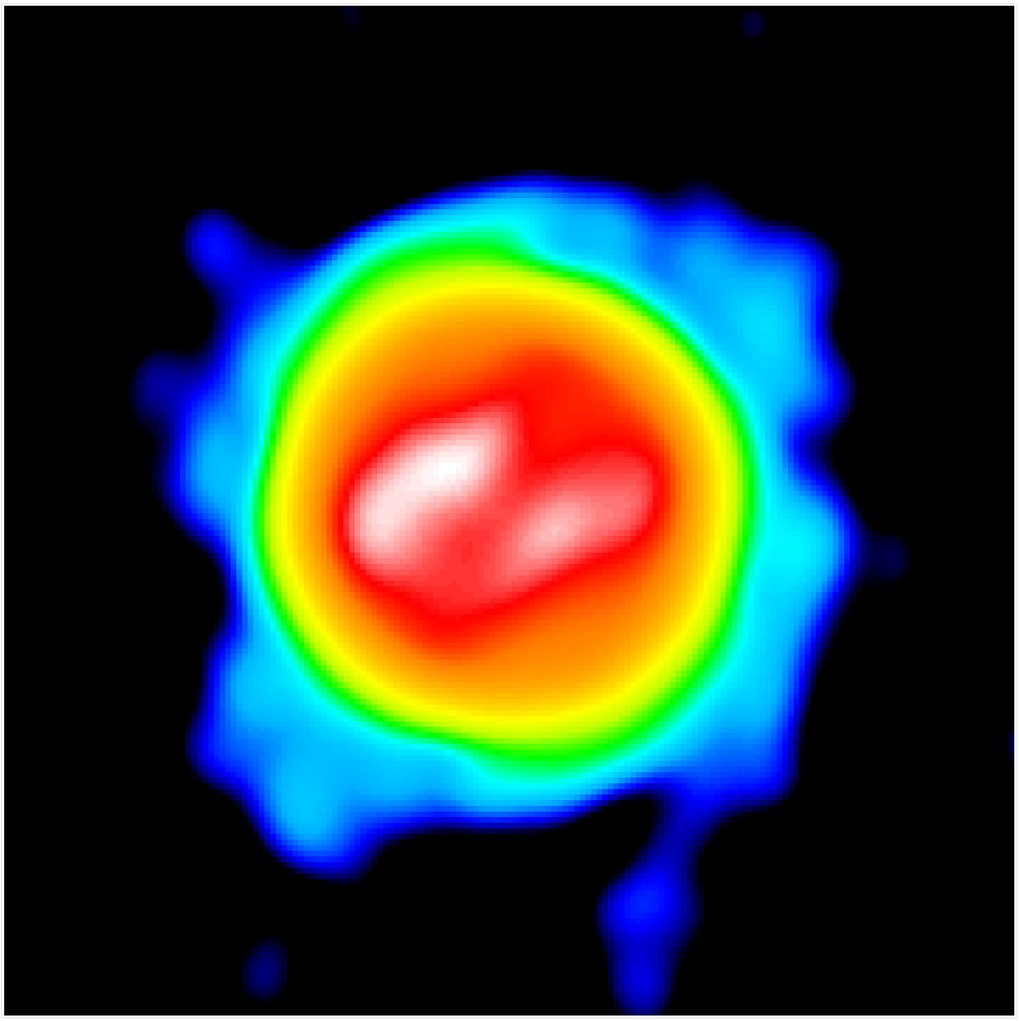Antares' turbulent twilight
A map of gas distribution and velocities in the atmosphere of a red supergiant delivers insights into the fate of a star
Astrophysicists can now better research how a star evolves at the end of its life. An international team, including researchers from the Max Planck Institute for Radio Astronomy in Bonn, has captured a snapshot of the turbulent motions in Antares' atmosphere. Similar measurements have previously only been performed successfully on the Sun. Antares is located around 600 light years from the Earth in the constellation of Scorpius. It has expended most of its fuel, having arrived at the red supergiant stage, and is gradually losing matter. Researchers could only compile the map of its atmosphere by combining three telescopes at the European Southern Observatory ESO on Paranal in northern Chile.

A star ends its life in a furious finale. It first expands to an enormous red fireball – the star Antares, with 12-times the mass of the Sun, becomes a behemoth, almost 700 times larger than the Sun and, if it were to take its place, would extend past the orbit of Mars. Later, the star will eject most of its matter in a supernova. However, red supergiants such as Antares lose matter long before they reach this stage. A team headed by the astronomer Keiichi Ohnaka of Universidad Católica del Norte in Antofagasta, Chile, has now taken a first look at this mass loss of Antares.
The researchers have successfully measured both the radiation intensity, which is a measure of the gas distribution, and the gas velocity across the entire surface of Antares. “For the first time, we have succeeded in obtaining a two-dimensional map of the dynamics, that is, the motions in the atmosphere of a star other than the Sun”, explains Keiichi Ohnaka. The researchers made the observations using ESO's Very Large Telescope (VLT) Interferometer. They linked three VLT telescopes and the AMBER instrument, thereby combining both interferometric and spectroscopic surveys. In their measurements, they determined the gas velocity using the displacement of spectral line frequencies resulting from the Doppler effect.
Mass loss in different regions and as a result of turbulent currents
The images of Antares that the team acquired in this way indicate that the matter loss from an ageing star is not ejected in an orderly manner, but is instead randomly distributed throughout different regions of the surface and is turbulent. With their observations on gas dynamics, motions and velocities in the immediate vicinity of the star, the researchers are contributing to solving a centuries-old problem: how a star loses matter in the late phase of its life. To date, there are a number of models: The process may be uniformly distributed across the entire surface of the star or only in a few regions; matter may therefore escape in a constant flux or in turbulent currents.
Some images of the surfaces of stars had been taken before, but only for a very few stars and without any information on the gas motions in the atmosphere. Individual telescopes can only resolve such surface details on our own Sun. However, if astronomers combine the light from several individual telescopes in an interferometer, they can achieve the spatial resolution necessary to perform the appropriate measurements on more distant stars. “The achievable resolution is proportional to the distance between the individual telescopes”, explains Karl-Heinz Hofmann. “We used the AMBER beam combiner instrument of ESO’s Very Large Telescope Interferometer for our observations because it also allows us to perform measurements with high spectral resolution and to measure velocities”.
A three-dimensional image of the stellar atmosphere is possible
The research team is now developing the method to produce a three-dimensional visualization of the atmosphere: “If we obtain maps of the gas motions at different heights throughout the atmosphere, we can obtain a three-dimensional picture of how the gas is moving in the atmospheres of stars”, explains Keiichi Ohnaka. Here, he and his colleagues aim to attain complete understanding of the mass loss process.
“The interferometric imaging method allows us to not only study stars in late evolutionary stages, but also very young stars surrounded by intact circumstellar disks, in which planets may form, and even extragalactic objects”, says Gerd Weigelt. “In these investigations, the researchers had to achieve both high angular resolution and high spectral resolution to study the velocity distribution in the gas. In future, the new MATISSE interferometry instrument will expand the opportunities to perform such observations, as it will allow observations in a wide wavelength range for the first time.
NJ/PH
